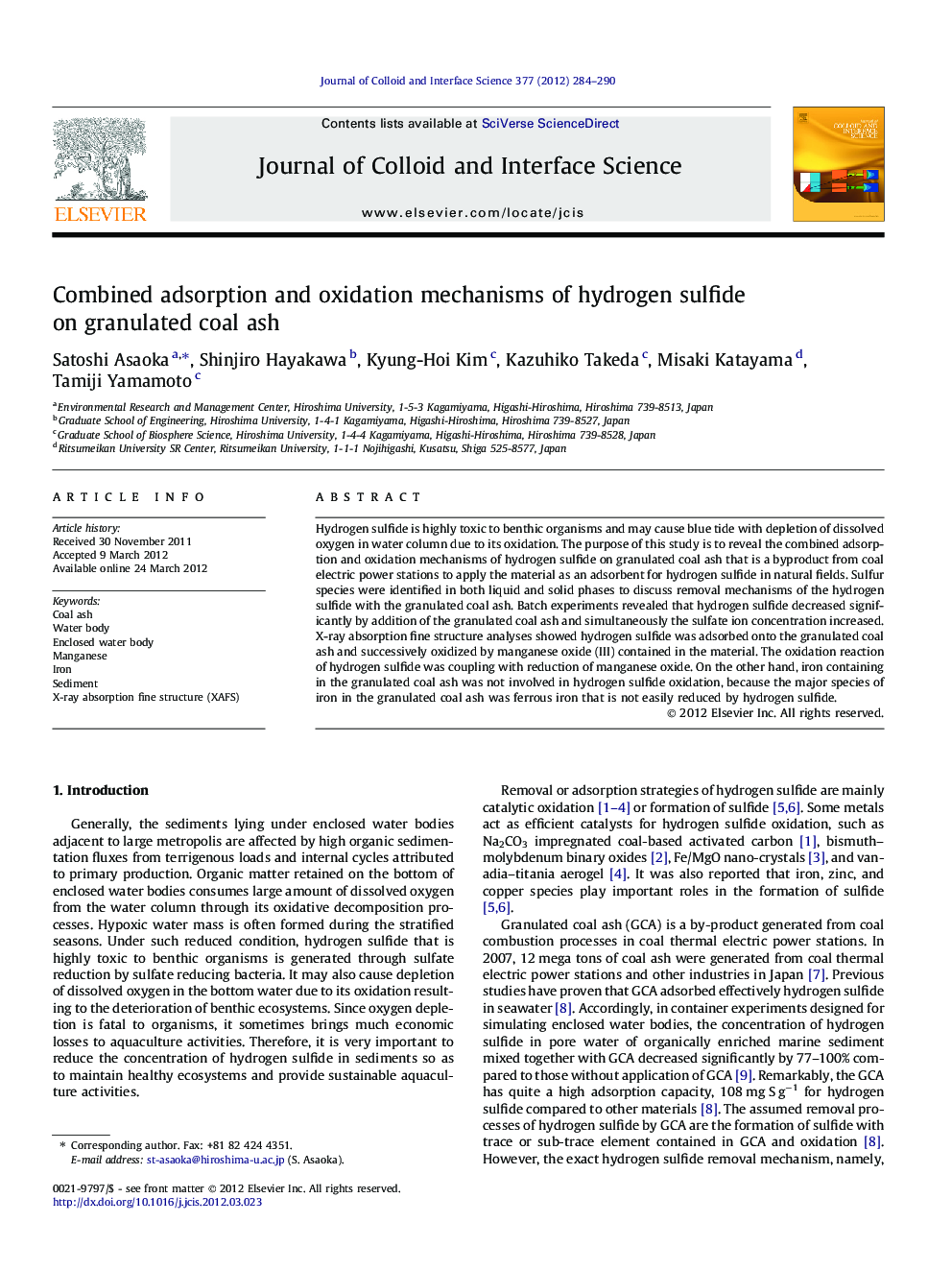| Article ID | Journal | Published Year | Pages | File Type |
|---|---|---|---|---|
| 608303 | Journal of Colloid and Interface Science | 2012 | 7 Pages |
Hydrogen sulfide is highly toxic to benthic organisms and may cause blue tide with depletion of dissolved oxygen in water column due to its oxidation. The purpose of this study is to reveal the combined adsorption and oxidation mechanisms of hydrogen sulfide on granulated coal ash that is a byproduct from coal electric power stations to apply the material as an adsorbent for hydrogen sulfide in natural fields. Sulfur species were identified in both liquid and solid phases to discuss removal mechanisms of the hydrogen sulfide with the granulated coal ash. Batch experiments revealed that hydrogen sulfide decreased significantly by addition of the granulated coal ash and simultaneously the sulfate ion concentration increased. X-ray absorption fine structure analyses showed hydrogen sulfide was adsorbed onto the granulated coal ash and successively oxidized by manganese oxide (III) contained in the material. The oxidation reaction of hydrogen sulfide was coupling with reduction of manganese oxide. On the other hand, iron containing in the granulated coal ash was not involved in hydrogen sulfide oxidation, because the major species of iron in the granulated coal ash was ferrous iron that is not easily reduced by hydrogen sulfide.
Graphical abstractFigure optionsDownload full-size imageDownload high-quality image (72 K)Download as PowerPoint slideHighlights► Combined adsorption and oxidation of H2S on granulated coal ash were studied. ► The oxidation of hydrogen sulfide was coupled with reduction of manganese oxide. ► The major species of iron in the granulated coal ash was ferrous iron. ► Iron in the granulated coal ash was not involved in hydrogen sulfide oxidation.
